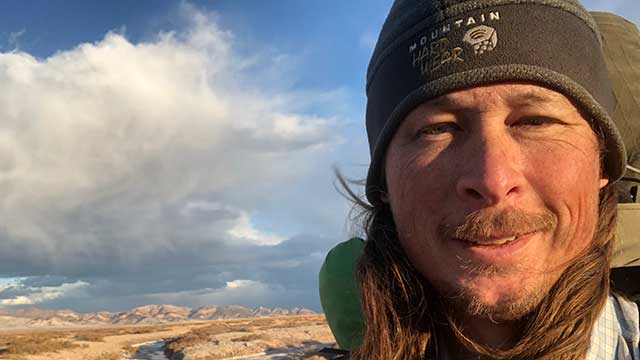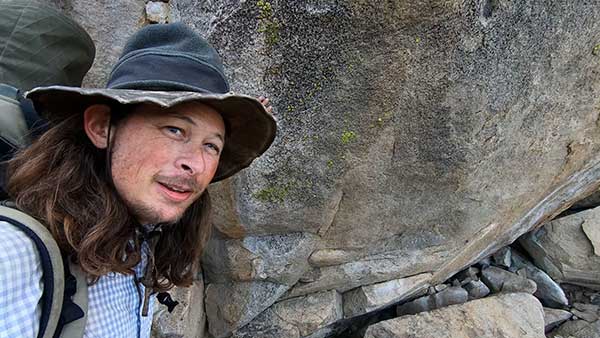In a feat possibly not attempted for more than 50 years, Cal Poly Pomona's Nick Van Buer, associate professor of geology, hiked more than 500 miles across California's Mojave Desert during his sabbatical last spring.
Over 35 days starting in January, Van Buer traveled on foot from the Mexican border near Yuma, Arizona to the Sierra Nevada Mountains near Olancha, California. Like the pioneers of old, he baked his own bread to conserve weight and space. His pack of provisions weighed up to 70 pounds. Half of the weight was water and only 10 pounds was food.
Among his adventures during the trek, he swam the Colorado River twice to shave off six miles of non-wilderness travel, had to dig for water at Chuckwalla Spring, hiked across the Cadiz Dunes at night in a windstorm, and traveled in the Avawatz Mountains, where he had to rely on hundred-year-old information.
"I seem to have planned this trek with just enough knowledge of my abilities to make it possible, but with enough over-optimism [for it] to be extremely difficult," said Van Buer.
Covering from 6 to 31 miles per day, mostly off trail, Van Buer crossed 20 wilderness areas and 15 mountain ranges, with elevations ranging from -280 to 7440 feet, and more cumulative elevation gain than climbing Everest from sea level twice. He resupplied water from natural sources 13 times and was resupplied with food by family and friends seven times.
Van Buer, who specializes in late Mesozoic hard-rock geology, undertook the journey to learn more about some of the desert's more rarely studied geologic features.
During the trek, he collected several granite samples believed to represent the roots of supervolcanoes present during the age of the dinosaurs, for laboratory analysis to determine their age and origin. Other geologic features encountered during the trip include glacial rocks deposited when the earth completely froze over 635 million years ago, spectacular folds in rocks from deep within the earth's crust, volcanic rocks from violent eruptions over the past 25 million years, and several active faults contributing to the complex tectonic boundary between North America and the Pacific plate.
Hoping to inspire young people to pursue STEM studies, he recently posted a 13-episode video series of the trek, "Across the Mojave," on YouTube. He will also use some of the videos in his classes.



